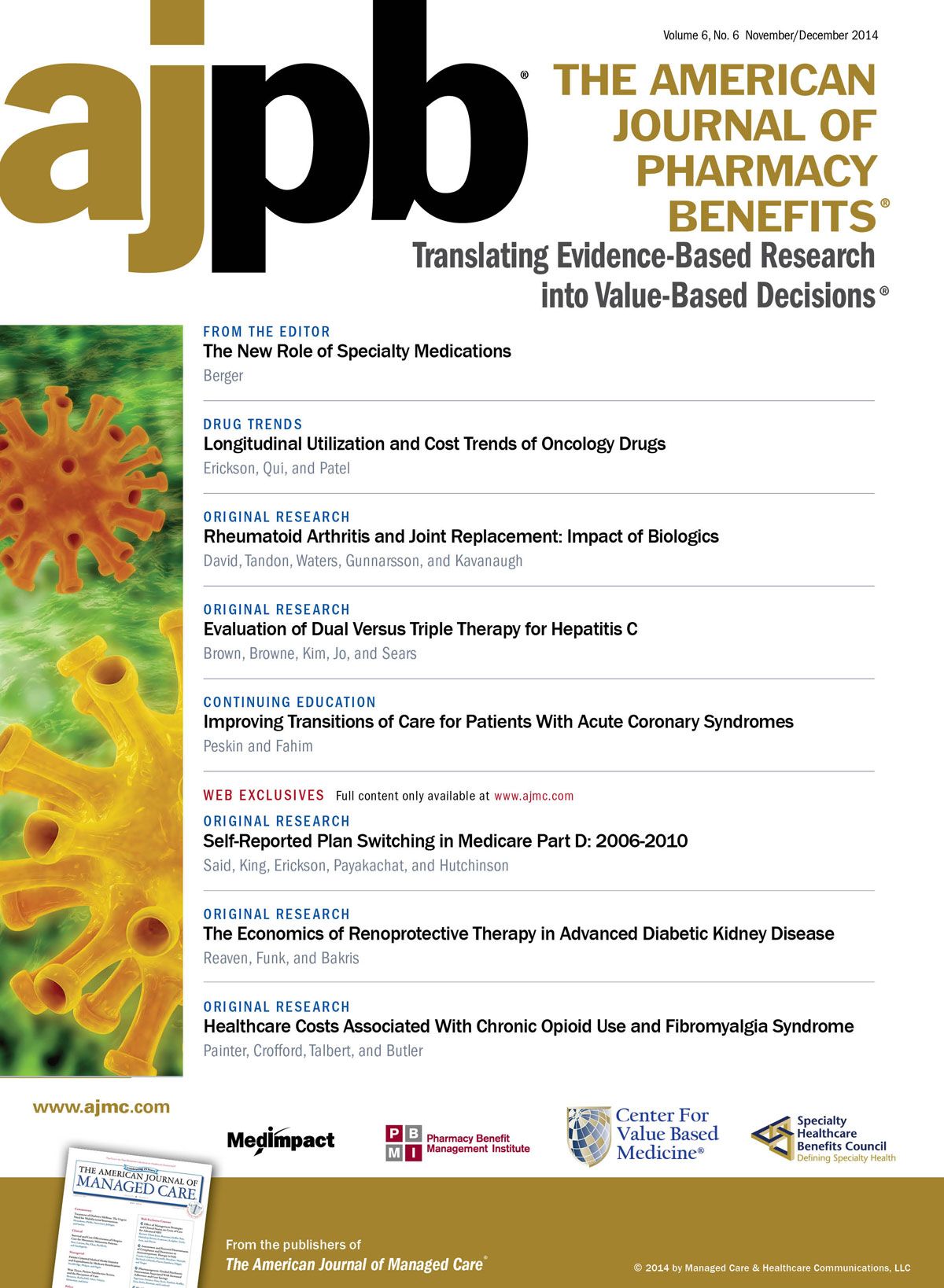Publication
Article
AJPB® Translating Evidence-Based Research Into Value-Based Decisions®
The New Role of Specialty Medications
It has always been said that physicians are the greatest influencers of what medications are prescribed to patients due to their “power of the pen.” This sway has created an environment where pharmaceutical manufacturers and healthcare insurers have spent a great deal of time and money over the years “educating” providers regarding the drug choices they make.
It was not that long ago that I was meeting with large national employers for lengthy discussions on specialty medications and their availability, their potential effectiveness, and their costs. These attributes started an interesting conversation regarding both the upside and the downside of these medications, many of which targeted conditions that previously had no treatment. They were a lifeline, and in some cases allowed people to work when they previously could not be productive in the workplace. These expensive “game changers” were not new, however. Hemophilia, among other conditions, had been treated with a specialty medication since the early 1970s.
In the case of hemophilia, only approximately 17,000 people were afflicted with the condition in the United States, giving it the status of a “rare” condition. Most of these medications treated rare, also called orphan diseases (characterized by afflicting fewer than 200,000 people), a population of only about 25 million people in the United States. The number of specialty medications was also quite small until the late 20th century, and then things began to change.
As the 1990s came to a close, we began to see new specialty medications come to market. An example of this was Enbrel, launched in 1998 to treat rheumatoid arthritis. This disease was not considered a rare disease, as it affected over 1.5 million people in the United States, so a situation developed where the number of people utilizing these high-priced medications was increasing exponentially. In addition, the pipeline of new specialty medications coming to market was swelling.
In 2003, an even greater challenge arose with the launch of Xolair, a medication that treated severe asthma. Employers and health plans were now looking at a high-cost specialty medication that treated a disease with 25 million sufferers in the United States, plus an additional 25 million with allergies. The era of high-cost specialty medications for the masses had arrived. These were the changes that had put me in front of healthcare payers, health plans, and employers alike, talking to them about this increasingly impactful trend. Many of those we spoke to ignored us, thinking that we were crying wolf, as they were seeing little impact in their populations. Others nodded their heads but felt that there was little that they could do, probably believing that this was a problem for tomorrow, not one that they would need to worry about for a very long time.
Fast-forward to the fall of 2014, the year the perfect storm hit. This year, we saw the launch of a specialty drug that costs approximately $80,000 per treatment course for a disease that is estimated to affect 5.2 million people in the United States (NHANES data). Once again I am seeing payers glaze over when I speak to them about specialty medications, but this time it is not due to lack of interest or understanding. In fact, the opposite is true: payers are concerned about the number of new drugs coming to market, the number of conditions that specialty medications are treating, and the cost of the medications.
The specialty drug movement will continue to gain momentum. By 2018, the overall spending on specialty drugs is expected to exceed the total spending on smallmolecule drugs. The impact will be felt not only on the cost of the medications, as there continue to be “mega-cost” specialty medications that will come to market, but also the conditions that will be treated by these medications. Today we see at least 3 specialty drugs for hyperlipidemia, with a prevalence of 71 million adults according to CDC estimates, and several specialty medications for the treatment of diabetes mellitus with a prevalence of over 29 million. It is clear to me that the time has come when payers will have to make some decisions regarding coverage, cost, and availability, because the opportunities, although great, have the potential for taking down the system.
What are your thoughts?







